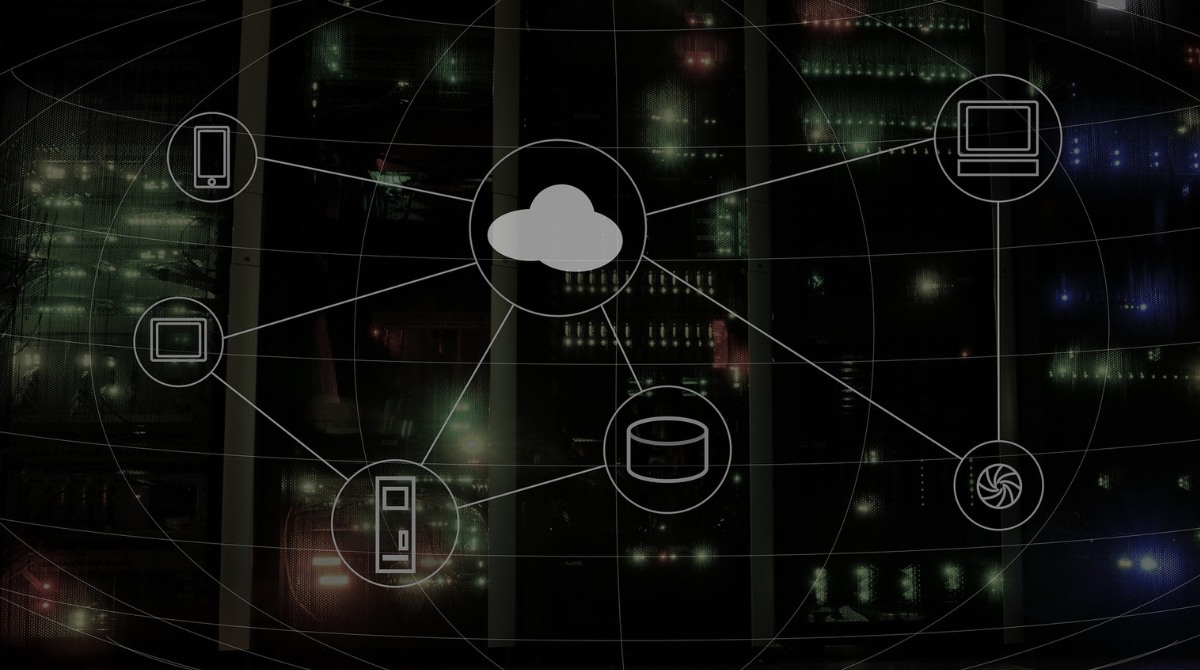Introduction
Welcome to the world of SMB SaaS, a technology-driven solution designed specifically for small and medium-sized businesses (SMBs). As the business landscape continues to evolve, the importance of staying agile, efficient, and competitive has become paramount for SMBs. This is where SMB SaaS comes into play, offering a range of benefits and solutions tailored to the unique needs and limitations of SMBs.
SMBs often face inherent challenges such as limited budgets, resource constraints, and the need to quickly adapt to changing market dynamics. Traditional software solutions can be costly and require extensive IT infrastructure, making them impractical for SMBs. SMB SaaS, on the other hand, provides a cost-effective and scalable alternative for accessing essential software and services.
By leveraging the power of the cloud, SMB SaaS offers businesses the flexibility and agility to streamline operations, optimize resources, and drive growth. Whether it’s project management, customer relationship management (CRM), human resources, accounting, or marketing automation, SMB SaaS solutions have emerged as a lifeline for SMBs seeking to level the playing field and compete with larger enterprises.
In this article, we will delve into the heart of SMB SaaS, exploring its definition, advantages, common features, and the ways in which it benefits SMBs. We will also address the challenges associated with implementing SMB SaaS and provide insights into selecting the right solution for your business needs.
So, whether you are a business owner, an entrepreneur, or simply curious about the world of SMB SaaS, read on to discover how this innovative technology can transform the way SMBs operate, thrive, and succeed in today’s ever-evolving business landscape.
Definition of SMB SaaS
SMB SaaS, also known as Small and Medium-sized Business Software as a Service, refers to the cloud-based delivery and subscription model for software applications and services specifically designed to meet the needs of small and medium-sized businesses. Unlike traditional on-premises software, SMB SaaS eliminates the need for businesses to invest in costly hardware, infrastructure, and maintenance.
With SMB SaaS, businesses can access a wide range of software applications and services through a web browser or mobile app, making it convenient and accessible from any device with an internet connection. These applications cover various business functions such as project management, sales and marketing, customer relationship management (CRM), accounting and finance, human resources, and more.
SMB SaaS providers host and maintain the software and data on their servers, ensuring high levels of security, reliability, and data backup. Updates and upgrades are automatically pushed to customers, allowing them to access the latest features and functionalities without any additional costs or manual installations.
SMB SaaS is often priced on a subscription basis, with businesses paying a monthly or annual fee for access to the software and services. This pay-as-you-go model provides SMBs with greater flexibility and scalability, as they can easily adjust their subscription plans based on their evolving needs and budget constraints.
Furthermore, SMB SaaS offers a multi-tenant architecture, meaning that multiple customers can share the same infrastructure and resources while maintaining their data privacy and security. This shared infrastructure helps to drive down costs and ensures that SMBs can benefit from the same enterprise-level technology and features as larger organizations.
In summary, SMB SaaS is a cloud-based software delivery model that allows small and medium-sized businesses to access and utilize a wide range of software applications and services without the need for significant upfront investment. It offers flexibility, scalability, cost-efficiency, and accessibility, making it an ideal solution for SMBs looking to improve their operations and compete in a rapidly changing business environment.
Advantages of SMB SaaS
SMB SaaS offers a plethora of advantages for small and medium-sized businesses (SMBs), providing them with the tools and resources they need to compete in today’s digital landscape. Here are some of the key advantages of implementing SMB SaaS:
1. Cost-effectiveness: One of the major advantages of SMB SaaS is its cost-effectiveness. With traditional software solutions, SMBs often face high upfront costs for licenses, hardware, and infrastructure. SMB SaaS eliminates these expenses by offering a subscription-based model, allowing businesses to pay for the software on a monthly or annual basis. This not only reduces the initial investment but also eliminates the need for ongoing maintenance and upgrades.
2. Scalability: SMB SaaS provides SMBs with the flexibility to scale their software usage based on their business needs. With traditional software, scaling up or down often involves complex installations, hardware upgrades, and additional licenses. SMB SaaS allows businesses to easily add or remove users, upgrade plans, or switch to different software applications as their requirements change, making it a highly adaptable solution.
3. Accessibility: SMB SaaS offers enhanced accessibility, enabling businesses to access their software and data from anywhere, at any time. As long as there is an internet connection, employees can collaborate, work remotely, and access critical business information. This accessibility fosters teamwork, improves productivity, and allows SMBs to operate seamlessly across multiple locations or with remote teams.
4. Quick Deployment: Unlike traditional software, which requires extensive installation, configuration, and onboarding processes, SMB SaaS can be quickly deployed. With just a few clicks, businesses can sign up for a subscription, create user accounts, and start using the software immediately. This rapid deployment allows SMBs to streamline their operations and get up and running in a shorter time frame.
5. Automatic Updates: SMB SaaS takes away the burden of manual updates and system maintenance. The software providers handle all updates, ensuring that businesses always have access to the latest features, security patches, and improvements. This not only saves time but also ensures that SMBs can leverage cutting-edge technology without any additional effort or costs.
6. Integration and Customization: SMB SaaS solutions often provide integrations with other popular business tools and platforms, allowing SMBs to streamline their workflows and enhance productivity. Additionally, many SMB SaaS providers offer customization options, enabling businesses to tailor the software to their specific needs and preferences, further enhancing its value and adaptability.
7. Data Security and Backup: SMB SaaS providers place a high emphasis on data security, often implementing robust security measures, encryption protocols, and strict access controls. This ensures that SMBs’ data is protected from unauthorized access, loss, or damage. Additionally, most SMB SaaS solutions offer automated data backup and disaster recovery features, providing businesses with peace of mind and preventing data loss in the event of an unexpected incident.
8. Enhanced Collaboration: SMB SaaS fosters collaboration by enabling teams to work together in real-time, share documents, and communicate seamlessly. This promotes cross-functional collaboration and improves efficiency within the organization, enhancing productivity and teamwork.
These advantages make SMB SaaS a game-changer for small and medium-sized businesses, empowering them with the tools and capabilities needed to drive growth, improve competitiveness, and adapt to the evolving business landscape.
Common Features of SMB SaaS
SMB SaaS solutions come equipped with a wide range of features designed to meet the specific needs of small and medium-sized businesses (SMBs). These features are tailored to streamline operations, enhance productivity, and drive growth. While the specific features may vary depending on the software application or service, here are some common features you can expect to find in SMB SaaS:
1. Cloud-based Storage: Most SMB SaaS solutions offer cloud-based storage, allowing businesses to store and access their data securely from anywhere. This feature eliminates the need for physical storage devices and provides businesses with a scalable and flexible storage solution.
2. Collaboration Tools: Collaboration tools are a key component of SMB SaaS, enabling teams to work together seamlessly. These tools often include features such as shared calendars, project management boards, document sharing, real-time editing, and communication channels, fostering teamwork and improving efficiency.
3. Customer Relationship Management (CRM): SMB SaaS CRM solutions help businesses manage and nurture their customer relationships effectively. These features typically include contact management, lead tracking, sales pipeline management, customer interaction history, and customizable reporting tools.
4. Accounting and Finance: SMB SaaS accounting and finance tools simplify financial management for SMBs. These features include invoice generation, expense tracking, budgeting, financial reporting, payroll management, tax calculations, and integration with accounting software.
5. Project Management: Project management features in SMB SaaS solutions assist in planning, tracking, and managing projects from start to finish. These features encompass task management, Gantt charts, time tracking, team collaboration, progress monitoring, and milestone tracking.
6. Human Resources Management (HRM): SMB SaaS HRM tools streamline HR processes and workflows for SMBs. These features commonly include employee onboarding, attendance tracking, leave management, performance evaluations, employee self-service portals, and HR analytics.
7. Marketing and Sales Automation: SMB SaaS marketing and sales automation tools automate repetitive marketing and sales tasks, enabling businesses to attract leads, nurture prospects, and increase conversions. These features may include email marketing, lead scoring, campaign management, social media integration, and reporting and analytics.
8. Reporting and Analytics: Reporting and analytics features provide SMBs with valuable insights into their business performance. These features allow businesses to generate customizable reports, track key performance indicators (KPIs), and gain a deeper understanding of trends, patterns, and opportunities within their operations.
9. Mobile Accessibility: Many SMB SaaS solutions offer mobile apps or responsive web interfaces, allowing users to access and manage their software and data from smartphones and tablets. This mobile accessibility ensures that SMBs can stay connected and productive even when they are on the go.
10. Integration Capabilities: SMB SaaS solutions often provide integration capabilities with third-party applications and tools, allowing businesses to streamline their workflows and centralize their operations. This feature enables businesses to connect their CRM, accounting, marketing, and other software applications, reducing data silos and enhancing efficiency.
These are just a few examples of the common features you can find in SMB SaaS solutions. Depending on your specific business needs, you may find additional features and functionalities that cater to your unique requirements.
How SMB SaaS Benefits Small and Medium-sized Businesses
SMB SaaS has become an invaluable tool for small and medium-sized businesses (SMBs), offering a multitude of benefits that empower them to thrive and succeed. Here are some ways in which SMB SaaS benefits SMBs:
1. Cost Savings: One of the most significant advantages of SMB SaaS is its cost-effectiveness. SMBs can avoid significant upfront costs associated with purchasing software licenses and infrastructure by opting for a subscription-based model. Additionally, SMBs save on ongoing maintenance and upgrades as these responsibilities are shifted to the SaaS provider.
2. Scalability and Flexibility: SMB SaaS solutions allow businesses to scale their software usage easily. As SMBs grow and evolve, they can add or remove users, upgrade or downgrade their subscription plans, and even switch to different software applications without incurring significant costs or disruptions. This scalability and flexibility are crucial for SMBs looking to adapt to changing business needs and seize growth opportunities.
3. Streamlined Operations: With SMB SaaS, SMBs can streamline their operations and improve efficiency. From project management and customer relationship management to finance and human resources, SMB SaaS offers a range of software solutions that centralize and automate key business processes. This streamlining of operations allows SMBs to save time, reduce errors, and focus more on core business activities.
4. Increased Collaboration: SMB SaaS solutions promote collaboration by providing features and tools that enable remote teams to work together seamlessly. With shared documents, real-time communication channels, and project management features, SMBs can enhance cross-functional collaboration, strengthen teamwork, and drive productivity within the organization.
5. Enhanced Accessibility: SMB SaaS solutions enable SMBs to access their software and data from anywhere, at any time, as long as there is an internet connection. This accessibility allows employees to work remotely, facilitates easier communication with clients and stakeholders, and ensures that critical business information is always within reach, fostering agility and responsiveness.
6. Competitive Advantage: SMB SaaS empowers SMBs to compete with larger enterprises by providing access to enterprise-level software and technology at affordable costs. SMBs can leverage advanced features, analytics, and automation tools to optimize their operations, improve customer experiences, and stay ahead in the market.
7. Data Security and Backup: SMB SaaS providers prioritize data security and implement robust measures to protect sensitive business information. They ensure that data is encrypted, backed up regularly, and accessible only by authorized individuals. This focus on data security helps SMBs mitigate the risks of data breaches, loss, or damage.
8. Innovation and Continuous Improvement: SMB SaaS solutions regularly update their software with new features, enhancements, and performance optimizations. SMBs benefit from these updates automatically, without the need for manual installations or additional costs. This allows SMBs to stay up to date with the latest technology trends, leverage new functionalities, and continuously improve their operations.
In summary, SMB SaaS offers small and medium-sized businesses numerous advantages, including cost savings, scalability, streamlined operations, increased collaboration, enhanced accessibility, a competitive edge, data security, and the ability to stay innovative and up-to-date. By leveraging these benefits, SMBs can overcome challenges, seize growth opportunities, and achieve long-term success in a dynamic and competitive business environment.
Challenges of Implementing SMB SaaS
While SMB SaaS brings numerous benefits to small and medium-sized businesses (SMBs), the implementation process does come with its own set of challenges that organizations must navigate. Here are some common challenges that businesses may encounter when implementing SMB SaaS:
1. Data Migration: Moving existing data from on-premises systems to the cloud can be a complex and time-consuming process. Ensuring a smooth and accurate transfer of data requires careful planning, data mapping, and data validation to avoid any loss or corruption of critical information.
2. Integration with Existing Systems: Many SMBs rely on multiple software applications to manage different aspects of their operations. Integrating these existing systems with new SMB SaaS solutions can be a challenge. It requires careful consideration of compatibility, data synchronization, and interoperability to ensure smooth communication and seamless workflow among different software applications.
3. User Adoption: Getting employees to embrace and fully utilize new SMB SaaS solutions can be a hurdle. Resistance to change, lack of familiarity, and fear of decreased productivity can impact user adoption. Proper training, effective communication, and demonstrating the benefits of the new solution are crucial to overcoming this challenge and ensuring successful implementation.
4. Vendor Selection: Selecting the right SMB SaaS vendor is essential for a successful implementation. With countless options available, businesses need to thoroughly evaluate vendors based on factors such as functionality, scalability, reputation, support, and pricing. A careful assessment and selection process can help mitigate the risk of partnering with a vendor that does not meet organizational needs.
5. Data Security Concerns: Moving business data to the cloud can raise concerns about data security and privacy. SMBs must ensure that the chosen SMB SaaS provider has robust security measures in place, including encryption, access controls, data backup, and compliance with relevant regulations. Addressing these security concerns is crucial for gaining the trust and confidence of stakeholders.
6. Dependency on Internet Connectivity: SMB SaaS heavily relies on internet connectivity for seamless access to applications and data. This means that any interruptions or downtime in internet connectivity can disrupt business operations. Businesses need to have contingency plans in place, such as a backup internet connection, to mitigate the risks associated with dependency on internet connectivity.
7. Limited Customization: While SMB SaaS solutions offer a range of features, customization options may be limited compared to on-premises systems. SMBs may need to adapt their processes and workflows to fit the functionalities provided by the SMB SaaS solution, which may require some level of adjustment and change management within the organization.
8. Ongoing Management and Support: Once implemented, SMB SaaS solutions require ongoing management and support. This includes tasks such as user administration, software updates, handling user inquiries, and troubleshooting any technical issues. Ensuring that proper resources and expertise are available to manage and support the SMB SaaS solution is important for its successful operation.
By anticipating and addressing these challenges, SMBs can better prepare for the implementation of SMB SaaS and maximize the benefits it provides.
Selecting the Right SMB SaaS Solution
Choosing the right SMB SaaS solution is a critical decision for small and medium-sized businesses (SMBs). With the multitude of options available, finding a solution that meets your specific needs can be a daunting task. Here are some key factors to consider when selecting an SMB SaaS solution:
1. Business Needs Assessment: Begin by conducting a thorough assessment of your business needs and requirements. Identify the key areas where you need software solutions and determine the specific functionalities and features that will drive the most value for your organization.
2. Scalability and Flexibility: Look for a solution that offers scalability and flexibility. As your business grows and evolves, you want a solution that can accommodate your changing needs. Ensure that the solution can easily scale up or down, add or remove users, and adapt to your expanding operations.
3. Functionalities and Integration: Evaluate the functionalities offered by the SMB SaaS solution and consider how these features align with your business processes. Additionally, assess the solution’s ability to integrate with your existing systems and software applications. Seamless integration across different platforms can improve efficiency and streamline workflows.
4. User Experience and Interface: Ensure that the user experience and interface of the SMB SaaS solution are intuitive and user-friendly. A solution that is easy to navigate and requires minimal training can help facilitate user adoption and maximize productivity within your organization.
5. Security Measures: Data security is of utmost importance. Verify that the SMB SaaS solution provides robust security measures, including data encryption, access controls, and regular data backups. Review their data protection policies and ensure that they comply with industry standards and regulations.
6. Vendor Reputation and Support: Research the vendor’s reputation in the market and evaluate their track record. Look for customer reviews, testimonials, and case studies to gain insights into the vendor’s performance and commitment to customer success. Additionally, assess the level of customer support they offer and determine whether it meets your organization’s needs and expectations.
7. Pricing Model and Cost: Consider the pricing model of the SMB SaaS solution. Compare the costs associated with the solution, including upfront fees, subscription pricing, additional modules or features, and any potential hidden costs. Make sure the pricing structure aligns with your budget and provides a good return on investment.
8. Demos and Trials: Whenever possible, take advantage of demos, trials, or free versions of the SMB SaaS solution to test its functionalities and evaluate its suitability for your organization. This hands-on experience will help you assess the solution’s performance and determine if it meets your specific needs.
9. Roadmap and Future Development: Assess the vendor’s product roadmap and future development plans. Understanding their vision and commitment to product improvement can help ensure that the SMB SaaS solution will continue to meet your business needs in the long run. Look for a vendor that invests in ongoing innovation and regularly updates their solution with new features and enhancements.
10. References and Recommendations: Seek references and recommendations from trusted sources, such as industry peers or professional networks. Hearing about others’ experiences with the SMB SaaS solution can provide valuable insights and help validate your decision-making process.
By carefully considering these factors and conducting proper due diligence, you can select an SMB SaaS solution that aligns with your business goals, supports your operations, and sets your organization up for long-term success.
Conclusion
SMB SaaS has revolutionized the way small and medium-sized businesses (SMBs) access and utilize software applications and services. With its cost-effectiveness, scalability, flexibility, and wide range of features, SMB SaaS has become a game-changer for SMBs looking to compete in today’s digital landscape. By leveraging SMB SaaS, businesses can streamline their operations, enhance collaboration, improve efficiency, and drive growth.
SMB SaaS offers numerous advantages for SMBs, including cost savings through the subscription-based model, the ability to scale software usage based on business needs, and the convenience of anytime, anywhere access to applications and data. It empowers SMBs to compete with larger enterprises by providing access to enterprise-level technology and features at affordable costs. Additionally, SMB SaaS ensures data security, automates business processes, and enhances collaboration and productivity.
However, SMBs must navigate challenges during the implementation of SMB SaaS, such as data migration, integrations, user adoption, and vendor selection. Despite these challenges, careful planning, communication, and proper resource allocation can lead to successful implementation and utilization of SMB SaaS.
When selecting an SMB SaaS solution, SMBs should assess their business needs, consider scalability and flexibility, evaluate functionalities and integration capabilities, prioritize data security, and research vendor reputation and support. Demos, trials, and customer references can also assist in making an informed decision.
In conclusion, SMB SaaS empowers small and medium-sized businesses with the tools and resources needed to thrive and compete in the digital era. Through its cost-effectiveness, scalability, accessibility, and feature-rich solutions, SMB SaaS enables SMBs to overcome challenges, streamline operations, enhance collaboration, and ultimately achieve business success.

























